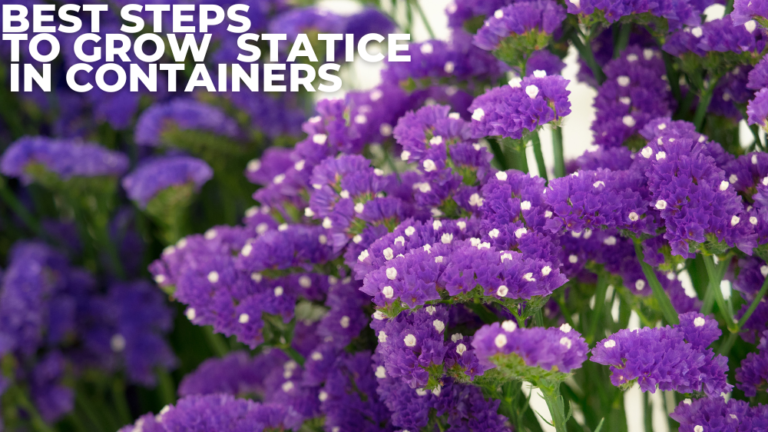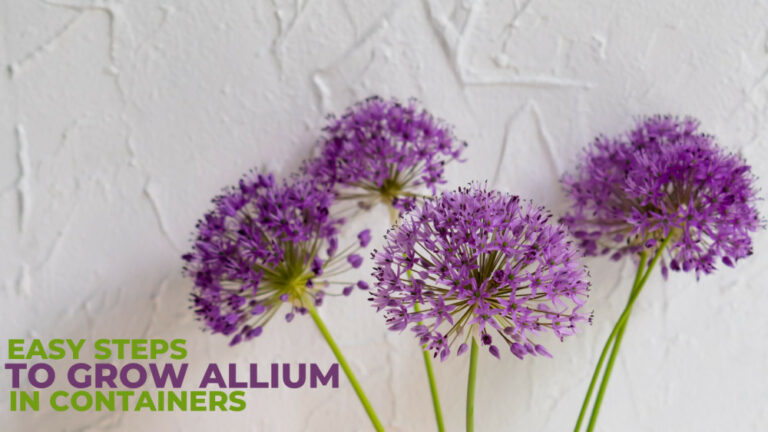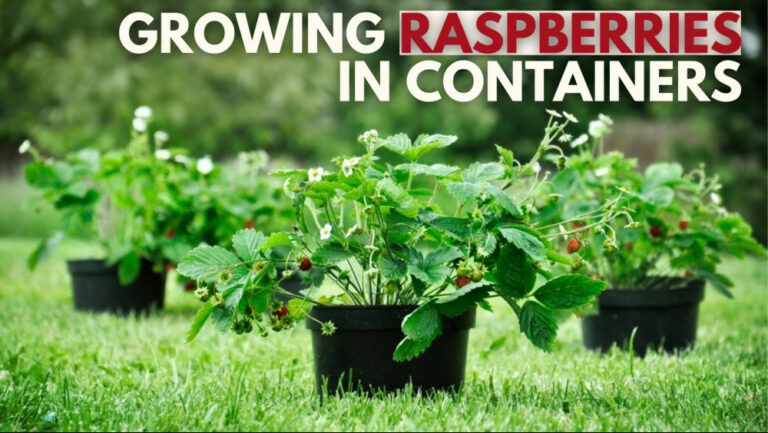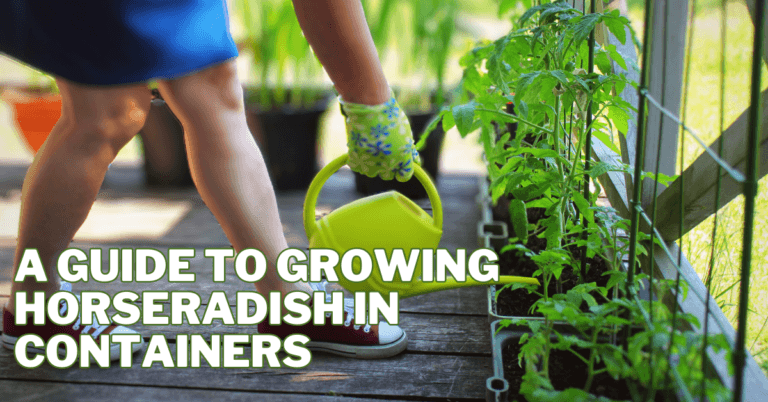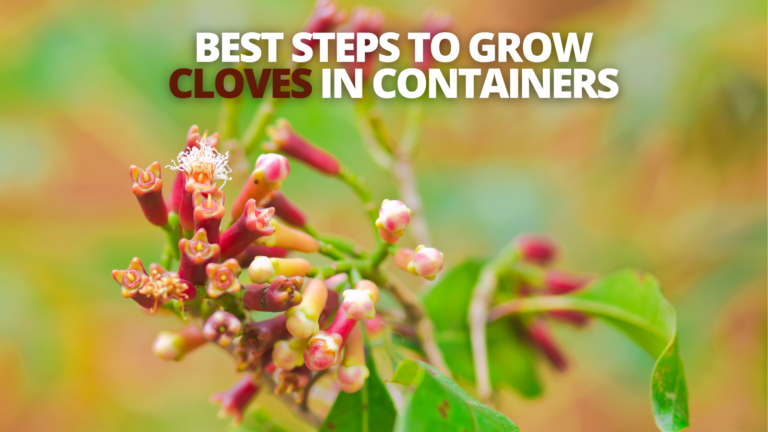7 Easy Steps For Growing Citrus Trees In Containers
7 Easy Steps For Growing Citrus Trees In Containers
For thousands of years, gardeners have grown citrus trees in containers. Oranges, lemons, and limes were grown in original glasshouses or orangeries.
You don't need a glasshouse or greenhouse or need to reside in a tropical region to grow oranges, grapefruits, lemons, limes, or kumquats.
Citrus is a prized potted plant for any home because of its gorgeous, edible fruit and sweet blooms.
You, too, may harvest these delicious goodies with a sunny window, the right container, decent soilless potting mix, a little fertilizer, and a little hand at watering.
I hope the full blog on growing citrus trees in containers will be helpful for you.

10 Best Citrus Trees For Containers
Before growing citrus trees in containers, you should find the citrus tree types suitable for your containers.

1. Mandarins
Clementines and tangerines are not all mandarin oranges, yet they are both types.
The fruits are smaller than regular oranges, are normally seedless or have fewer seeds, have a pleasant flavour, and are easy to peel. Because of their modest length of 10-12 feet, they can easily be kept in containers.
Mandarins thrive in full sun and mild temperatures. If you live in a cold area, protect your plants from cold drafts and freezing temperatures in the winter.
Clementine oranges are a cross between mandarins and tangerines. The taste is sweeter with no seeds, and the fruit is luscious. Here's how to grow them.
Tangerines, on the other hand, are mandarin hybrids. They have a sweet flavour but are tangier than clementines.

2. Kumquats
Kumquats bear fruit resembling oranges but are considerably smaller, spherical, or oval.
Another unique feature of kumquats is that you don't have to peel them to consume them. The skin is sweet, and the pulp is sour.
Because these citrus trees are inherently short, there's no need to choose a type that grows on dwarf rootstock.
Kumquats thrive in hot summers and chilly fall and winter evenings. The round kumquats are hardy down to 10°F (-12°C) for a long time. Bring this fruit tree indoors in the winter if you live in a really cold climate.
The fruit of ‘Fukushu' is sweeter than normal, and the tree is thornless. The kumquat variety ‘Meiwa' is the sweetest and least seedy. Trees have almost no thorns.
The ‘Tavares Limequat' is a kumquat and Mexican lime hybrid. The tree has a pleasing appearance and is small (less than 6 feet tall at maturity).

3. Sweet Limes
In Asia, the Indian subcontinent, and the Middle East, sweet lime is a popular citrus cultivar. Its fragrant, juicy, sweet, and non-acidic fruits are widely used to make fresh juices.
This small tree can be cultivated on the ground in USDA Zones 9-11 or any other frost-free location.
It's also known as Indian sweet lime, Palestine sweet lime, or Mausambi. It doesn't grow very tall, making it an ideal citrus tree for container planting.
Like other citruses, it self-pollinates. It prefers a warm climate with plenty of sunshine and grows similarly to orange trees.

4. Lemons
Lemons are an excellent choice for both hot and cool summers. They like a warm subtropical temperature and coastal locations, yielding fruit all year. It's one of the best container citrus trees!
Lemon trees are usually only a few feet tall, but you can grow any kind you desire if you live in a mild winter climate.
The ideal cultivar for temperate zone container gardeners is ‘Improved Meyer.' It's a disease-free alternative to normal Meyer lemons.
Since it is a lemon-orange hybrid, the fruit is sweeter and has a thinner skin. During the winter, it may be moved indoors without reducing fruit output.
Both ‘Sungold' and ‘Variegated Pink' have variegated green and yellow leaves.

5. Oranges
Oranges require summer heat to produce their sweet yet bitter fruit. Coastal places and northern climes with warm summers are not good for them.
The navel orange varieties ‘Washington' and ‘Robertson' are almost identical. ‘Robertson' bears fruit two weeks earlier than ‘Washington.' Your orange harvest will be extended if you grow one of each.
‘Tarocco' is red-fleshed blood orange with a rich flavour and raspberry overtones. It's a fantastic espalier.
The skin of the ‘Trovita' orange is thinner than that of navel oranges, and it lacks a navel. It also needs less heat than other orange varieties.

6. Dwarf Bearss Seedless Lime
The Dwarf Bearss Seedless Lime is another excellent citrus fruit to grow in containers. The fruits grow larger and mature throughout the winter and early spring.
It is well-known for making an excellent patio and container plant, and its dark green foliage is very appealing.
The fruit can be used in both beverages and cooking. It's popular because it's seedless and has a pleasant taste.
USDA Zones 9-11 are ideal for this tree. In pots, it can grow to be 3-6 feet tall.

7. Australian Finger Limes
The Australian Finger Lime is also citrus-related and is most known for producing such an unusual-looking fruit.
It can reach 20 feet in the wild, but it only grows to about 4-7 feet tall in a container.
The lime is rectangular and lengthy, resembling a finger, which is how it got its name. Citrus beverages, sauces, marmalades, sauces, and chutneys are all delicious with it.
This unusual plant can survive in harsher conditions and is resistant to deer and birds.
The finger-shaped lime trees perform best outside USDA Zones 8 to 11 and indoors in Zones 4 to 11 in pots.

8. Kaffir Limes
Kieffer Lime, Kaffir Lime, and Makrut Lime are known for their tanginess and use in Indonesian, Thai, and Cambodian cuisines. The plant can reach 2-5 feet in a pot.
The fruit is dark green with a rough texture and a powerful aroma. It is commonly available in the size of a western lime.
This citrus shrub may be grown in containers, making it ideal for home chefs and urban gardeners. In USDA Zones 9-10, this plant does well all year.

9. Wekiwa Tangelos
Though it shares the same name as the Minneola Tangelo, this one looks more like a pink grapefruit.
It can reach a height of 3-6 feet. It's one of the best container citrus trees! The flavour is similar to tangerine, with a slight grapefruit undertone.
Wekiwa's juice is sweet and popular, and this hybrid thrives in containers. USDA Zones 8-10 are ideal for citrus trees.

10. Yuzus
The Yuzu, also known as the Japanese Citron, is prized for its acidity, fragrance, and ability to keep flavour while cooking. In pots, it can reach a height of 4-6 feet.
The fruit is dark yellow in colour and irregular in texture.
This prickly shrub is extremely cold-hardy, surviving in temperatures as low as 5-10°F (-15 to -12 °C). USDA Zone 8 is suitable for this long-thorned tree.
Steps Of Growing Citrus Trees In Containers

1. Select The Right Container For Growing Citrus Trees
When planting a young citrus tree, start with a small container. Maintaining optimum soil moisture in a small container will be easier than in a large container.
A young tree with a small root system may rot and die if the soil in a large container becomes too damp.
An 8-inch-diameter pot will be enough for a new citrus tree. A 10—to 12-inch-diameter container is required for two—to three-year-old trees.
For long-term growth, you'll need a 16 to 20-gallon container or a half-whiskey barrel-sized container.
Choose containers made of plastic, terra cotta, or wood. Make sure they have enough drainage holes.
Plastic containers are the lightest and most convenient to move indoors and out as the seasons change.
However, the glazed terra cotta planters are more appealing when the plants are cultivated indoors as houseplants.

2. Soil For Growing Citrus Trees
Citrus plants like evenly damp, never-waterlogged soil. Too-dry or too-wet soil is a recipe for disaster.
Commercial potting mixes designated for cactus, palms, and citrus have a nice balance of chemicals that keep moisture in the soil while allowing it to drain freely and rapidly.
To help keep nutrients available, combine extra organic matter* with earthworm castings.
Because citrus roots require air, planting depth is critical. The base of the tree trunk, where it begins to flare out, should always be slightly visible.
Firm the soil beneath the plants while replanting to assess the planting level precisely.
Fill your container halfway with beautiful mulch, pebbles, or moss, leaving enough room at the top for watering.
Pennington UltraGreen Plant Starter with Vitamin B1 gives your citrus a post-planting boost by preventing transplant shock and delivering unique micronutrients that help roots establish.

3. Planting Citrus Trees
Determine the graft union's location. This little bump or scar appears about 4″ to 8″ above the root ball where the fruit variety was grafted on the rootstock.
While transplanting, make sure the graft union is above the soil line. Any new green shoots that emerge below this point should be removed immediately.
These rootstock suckers will deplete the tree's resources while failing to produce the fruit you expect from the variety.

4. Light And Temperature For Growing Citrus Trees
Citrus trees require 8 hours of sunlight daily and thrive in a sunny, wind-free environment.
Citrus trees are also frost-sensitive, and in cold weather, they must be sheltered or relocated to a covered inside space.
The cold-hardiest trees are kumquat and mandarin, followed by grapefruit and orange.
Lemon and lime trees, on the other hand, are the most frost-sensitive. If your winter nighttime temperatures are frequently below 35°F, you'll need to bring the citrus indoors to protect it from frost and provide it with additional grow lights.
If the temperature around the tree is only occasionally frigid, cover it with frost cloth or use incandescent lights (not LED) to warm the air around it.

5. Watering Citrus Trees
Citrus roots thrive in damp but not soggy environments. However, since the roots dry up more quickly when grown in containers, citrus requires different watering requirements.
You can use a moisture meter to determine when to water. The soil's surface may feel dry.
Test it by placing the meter closer to the roots. Thoroughly water until the water starts to run out of the drain holes.
Containers dry out quickly during the hottest months of the year, so you may need to water them several times weekly.
You will need to water much less in the cooler months. Pay attention to the surrounding vegetation.
Wilted leaves that perk up after being watered indicate roots that have been let to dry out too much.
More water should be consumed. If your leaves are yellowed or curled after watering, you may be watering them too much. Reduce your watering frequency.

6. Fertilizer For Growing Citrus Trees In Containers
Regular applications of a balanced fertilizer help citrus trees. That being said, timing is crucial.
Feed your citrus when it is growing, and stop feeding throughout the winter. We recommend lowering or eliminating fertilizer as late summer approaches to allow root and foliage growth to harden.
Excess nutrients, especially in the root system, can induce weak or mushy growth when the days decrease in late fall, leading to root disease.
Once fresh growth appears in late winter, feeding can be resumed. Use an organic or granular synthetic fertilizer with a delayed release.
Smaller amounts of either should be added to the water more frequently than a single injection of a higher concentration.
Instead of using the whole concentration once a month, we utilize a quarter of it weekly.
Iron chlorosis, or the whitening of immature leaves, affects several citrus species. This is common in winter when growth is slow, and temperatures are cool.
7. Pruning Of Citrus Trees
Pruning citrus trees in containers is usually only required on a seasonal basis to help them maintain their shape.
A branch, sometimes known as a lead, may frequently stretch out or rise, giving the plant an ugly form. This branch can be clipped down.
Furthermore, some strategic pruning when plants are young can help them develop a full form as they mature. We propose a strong, multi-stemmed plant that will produce more fruit.
While thinning fruit or stake branches is fine, don't over-prune, or your harvest will be smaller.
Remember that the blossom bud for the following season's harvest is typically formed on last summer's growth, and over-pruning might reduce fruit yield.
As a result, the optimal time to prune, if at all, is shortly after the fruit has been plucked. On the other hand, most plants like to be left alone and produce fruit even if neglected.
8. Winter Care For Citrus Trees
When the temperature drops below 30°F in the winter, bring the citrus tree indoors. In the spring and fall, gradually transition the trees to an indoor/outdoor setting by bringing them in and out for one week.
To maintain the humidity high during the dry months, place potted plants in a sunny south-facing window, limit watering, and consider using a humidifier or other houseplants.
Protect citrus trees left outside in warm winter climates from frost using Christmas lights, blankets, or burlap.

9. Harvesting Citrus Fruit
Many citrus trees blossom indoors during the chilly months of late fall and early winter and fruit in late winter and early spring.
Citrus fruit can be picked any time after it has ripened—after the green fruit has turned a darker hue (unless it is a lime).
You can leave citrus fruit on the tree for ornamental purposes. Citrus trees not only provide a constant supply of fresh fruit, but they also make lovely houseplants with fragrant blossoms.
10. Pests & Diseases Of Citrus Trees
If the brown roots come apart easily when you take the plant out of its container, it's probably dead.
If the roots look healthy, apply more fertilizer. Yellow or light-coloured leaves that drop are common in plants grown cool—or even cold. Once the temperature rises, this will change.
The most frequent citrus pests are scale insects, mealybugs, and spider mites. Scale insects appear as brown lumps and black sooty mould on plants.
Mealybugs produce a cottony white mass at the base of the leaf stems or on the undersides of leaves, and black sooty mould can also be found on leaves.
In hot, dry weather, spider mites, which form light pinpricks on leaves, can be a concern. Examine the undersides of the leaves with a magnifying glass. Plant webbing may occur as spider-mite populations increase.
Perseverance is crucial when dealing with pests. We recommend introducing the Australian lady beetle (Cryptaolaemus montrouzieri), a mealybug predator.
The simplest way to get rid of spider mites is to squirt cold water on the underside of the leaves every day until they're gone. For all three pests, you might use Neem oil.
Conclusion
What's not to like about year-round greenery, sweet-smelling blooms, and delectable fruit?
I hope you will get good results if you follow the steps for growing citrus trees in containers. Feel free to leave a comment if you have any problems or inquiries.
I trust you enjoyed this article on the 7 Easy Steps For Growing Citrus Trees In Containers. Please stay tuned for more blog posts soon. Take care!
JeannetteZ
>>>Please click here to read my all-inclusive article about Container Gardening<<<
Are you interested in homegrown herbs and medicine? Please click here to find out more about it!
Your Opinion Is Important To Me
Do you have thoughts, ideas, or questions? I would love to hear from you. Please leave me your questions, experiences, and remarks about this article on the 7 Easy Steps For Growing Citrus Trees In Containers in the comments section below. You can also email me at Jeannette@Close-To-Nature.org.
Disclosure
This post may contain affiliate links. I earn from qualifying purchases as an Amazon Associate and other affiliate programs. Please read my full affiliate disclosure.
You might also enjoy these blog posts:
9 Easy Steps Of Growing Peaches In Containers
Easy Ways To Grow Pineapple On A Balcony
8 Easy Steps To Growing Kale In Containers
9 Easy Steps To Growing Lettuce In Containers



